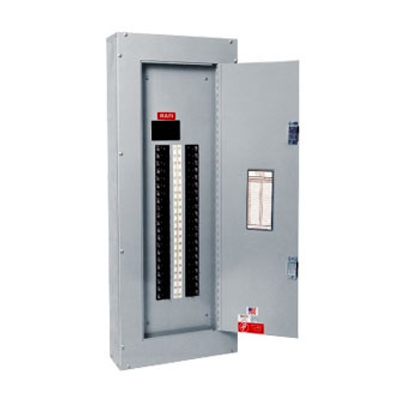Panelboards and Switchboards

Panelboards and Switchboards: What You Need to Know
Panelboards and switchboards are critical components in any electrical system that require power distribution and control. These products play an important role in managing the flow of electricity throughout a building or facility and are designed to meet the specific needs of different applications.
In this blog post, we will provide an overview of panelboards and switchboards, and explain the key differences between these two products.
What are Panelboards?
A panelboard is an electrical distribution board that is used to divide an electrical power feed into separate circuits. Panelboards typically consist of a back panel, which contains the main breaker or main lugs, and a series of branch breakers or fusible switches that distribute power to individual circuits. Panelboards are available in a variety of sizes and configurations and can be customized to meet the specific needs of an application.
Types of Panelboards:
Lighting Panelboards: Lighting panelboards are designed to distribute power to lighting circuits in a building or facility.
Power Panelboards Power panelboards are designed to distribute power to equipment and other devices that require higher levels of electrical current.
Combination Lighting and Power Panelboards Combination panelboards are designed to distribute power to both lighting circuits and equipment circuits. These panelboards may have a main breaker or main lugs, and can include branch breakers or fusible switches for both lighting and power circuits.
What are Switchboards?
A switchboard is an electrical distribution panel that is used to distribute power to multiple circuits, typically at higher voltages than panelboards. Switchboards consist of a series of bus bars, which carry the electrical current, and a series of switches or breakers that are used to control the flow of electricity to different circuits.
Switchboards are available in a variety of sizes and configurations and can be customized to meet the specific needs of an application.
Types of Switchboards:
Main-Tie-Main Switchboards: Main-tie-main switchboards are designed to provide a backup power source in the event of a power outage. These switchboards have two main breakers or main lugs, which are connected to separate power sources. If one power source fails, the other can take over, providing uninterrupted power to critical systems.
Fusible Switch Switchboards: Fusible switch switchboards are designed to provide overcurrent protection to circuits that require higher levels of electrical current. These switchboards may use fuses instead of circuit breakers to protect the circuits from overcurrent.
Circuit Breaker Switchboards: Circuit breaker switchboards are designed to provide overcurrent protection to circuits that require higher levels of electrical current. These switchboards use circuit breakers instead of fuses to protect the circuits from overcurrent.
Key Takeaways
Panelboards and switchboards are critical components in any electrical system that require power distribution and control.
At Triple C Electric, we carry a wide range of panelboards and switchboards to meet the needs of any application. Contact us today to learn more about our products and services.


